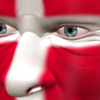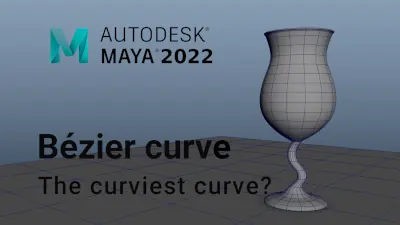Introduction to Maya - Modeling Fundamentals Vol 1
This course will look at the fundamentals of modeling in Maya with an emphasis on creating good topology. We'll look at what makes a good model in Maya and why objects are modeled in the way they are.
#
1
09-08-2004
, 08:43 AM
Registered User
Join Date: Jan 2004
Join Date: Jan 2004
Location: Copenhagen, Denmark
Posts: 55
render faster please...
This is what everybody wants, a faster rendering. So far I thought, the faster a machine you got, the fater the software will render.
But my new machine is very fast. When rendering i look into the "joblist" (not sure if this is the english name of that) but anyway, it tells me that I'm currently using only about 10 % of my cpu availeble.
Is there a way to make it use all resources avalible and thereby do a faster rendering?
Thanks.
: ) Jakob
<i>It's the "hard", that makes it great! - Tom Hanks</i>
#
2
13-08-2004
, 03:41 PM
#
3
14-08-2004
, 12:40 AM

#
4
18-08-2004
, 02:59 PM
Imagination is more important than knowledge.
Last edited by NextDesign; 19-08-2004 at 09:14 PM.
#
5
21-08-2004
, 07:08 PM

#
6
22-08-2004
, 11:24 AM
Registered User
Join Date: Jan 2004
Join Date: Jan 2004
Location: Copenhagen, Denmark
Posts: 55
pentium 4 - 3GHz
1024 mb memory
radeon 9800 - 128mb (or something like that)
windows xp
The computer is fast, but it seems that maya can't take fully advanges of the cpu. Could I need more memory perhaps?
: ) Jakob
<i>It's the "hard", that makes it great! - Tom Hanks</i>
#
7
27-08-2004
, 07:13 AM
family would be just nice that is if you got the cash...check out alias website for cards that work best with maya..
#
8
27-08-2004
, 02:07 PM
Subscriber
Join Date: Dec 2002
Join Date: Dec 2002
Posts: 123
#
9
30-08-2004
, 08:16 AM
Registered User
Join Date: Jan 2004
Join Date: Jan 2004
Location: Copenhagen, Denmark
Posts: 55
Anyway, thanks for all the answers.
: ) Jakob
<i>It's the "hard", that makes it great! - Tom Hanks</i>
#
10
31-08-2004
, 07:01 AM
To change the priority of a program in Xp, go to the task manager (usually you can call it by pressing CTRL-ALT-DEL).
Then click with the secondary mouse button (usually the right one) and select the item Go to process (it should be the last one in the popup menu). Now you should be in the processes tab, with the right process selected. Again click with secondary button and select Set priority in the menu, then you can choose the priority that you want.
If you are rendering an animation, you must set the priority of the batch render and not of Maya, so you have to start the rendering and then go directly to the Processes tab of the task manager and search for the right process (it doesn't show in the Application tab) and change priority.
Hope this helps...
Bye!!
#
11
17-09-2004
, 02:31 AM
#
12
24-09-2004
, 02:38 PM
Another way is to optimize your scene .. this is always a good starting point .. By optimizing I meen something like making sure your Dmap (for shadows on the lights) and texture file resolutions is not larger than absolutely required, using raytracing only when needed, turning off Double sided, where possible, and such things..
and finaly utilizing Light linking and rendering in passes is also a possible way to increase rendering times.
Carsten Lind
Senior 3D Artist,
Maya Software Manager & Maya Instructor
LEGO Systems A/S
#
13
24-09-2004
, 11:38 PM
#
14
25-09-2004
, 12:55 AM
It's all about the amount of data vs the computing power at hand. Triangle count is the first place to start with... including nurbs/subd/displacement tessellation settings... From the renderer's point of view everything is tessellated to triangles at the end. The fewer you have, the faster it'll render.
Texture and shadow resolution is one critical point too like Caligraphics said. Same goes with raytracing. If you know that your image looks ok with only one reflection ray, then there's no point on allowing the renderer to do 10 reflections.
Again repeating what Caligraphics said; use light linking whenever it might make sense.
Another often overlooked thing is the antialiasing / sampling quality settings. These might be a little hard to understand but tweaking them can really improve the render times. Read the documentation on these buggers...
Also with MR, tweaking the BSP settings can improve the render times when raytracing.
With huge scenes with lots of high resolution textures and perhaps a massive particle disc cache the speed of you hard disk might come into play as well. If it takes 10 seconds per frame to load everything for one frame, then for a 60 frame animation that's one extra minute to wait... an like we all know, 60 frames is only two seconds of animation in NTSC format...
#
15
28-09-2004
, 07:34 AM
Registered User
Join Date: Jan 2004
Join Date: Jan 2004
Location: Copenhagen, Denmark
Posts: 55
Thanks again, and good day!
: ) Jakob
<i>It's the "hard", that makes it great! - Tom Hanks</i>
Posting Rules Forum Rules
Similar Threads
RENDER VS BATCH RENDER VS VECTOR!
by Albepie in forum Lighting & Rendering replies 0 on 24-03-2016
Batch Render Issue
by skippyk39 in forum Lighting & Rendering replies 4 on 09-07-2011
Rendering sequences directy from render view?
by proxy003 in forum Lighting & Rendering replies 0 on 19-01-2011
suddenly cannot render
by existangst in forum Maya Basics & Newbie Lounge replies 1 on 03-11-2009
Which one is faster to render?
by tvholicjames in forum Lighting & Rendering replies 4 on 09-03-2003
Topics
Free Courses
Full Courses
VFX News
How computer animation was used 30 years ago to make a Roger Rabbit short
On 2022-07-18 14:30:13
Sneak peek at Houdini 19.5
On 2022-07-18 14:17:59
VFX Breakdown The Man Who Fell To Earth
On 2022-07-15 13:14:36
Resident Evil - Teaser Trailer
On 2022-05-13 13:52:25
New cloud modeling nodes for Bifrost
On 2022-05-02 20:24:13
MPC Showreel 2022
On 2022-04-13 16:02:13












